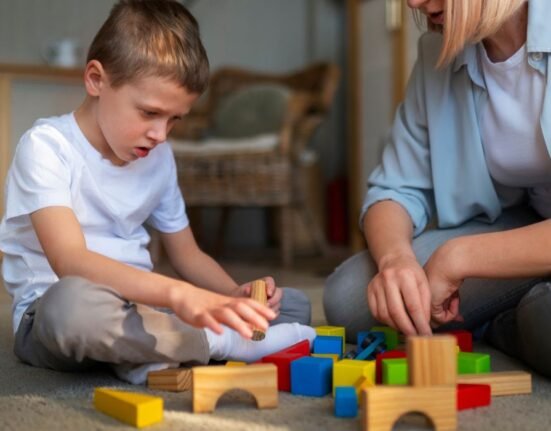Bullying is a pervasive problem that affects individuals across age groups and backgrounds. It reduces individuals to mere objects of manipulation, control, and harm, stripping them of their inherent worth and dignity. It can shatter an individual’s self-concept, creating feelings of inadequacy, worthlessness, and a negative self-image. Bullying is rooted in a profound lack of empathy and understanding towards the experiences and emotions of the victim.
Types of Bullying
- Cyberbullying: In the digital age, bullying has expanded to the online world. Cyberbullying involves using digital platforms, such as social media, text messages, or emails, to harass, threaten, or humiliate someone. Cyberbullying can take the form of spreading false information, sending hurtful messages, or sharing embarrassing photos or videos.
- Verbal Bullying: This type of bullying involves using words to hurt or harm someone. Verbal bullying can include name-calling, insults, teasing, taunting, spreading rumours, or making derogatory comments about a person’s appearance, abilities, or characteristics.
- Social or Relational Bullying: Social bullying, also known as relational bullying, focuses on damaging a person’s social relationships or reputation. It often includes excluding someone from social groups, spreading rumours or gossip, manipulating friendships, or isolating a person.
- Workplace Bullying: In adult settings, workplace bullying can occur, where employees are subjected to mistreatment, harassment, or intimidation by their colleagues or superiors. This can include verbal abuse, humiliation, exclusion, or sabotaging a person’s work.

- Verbal Abuse by an Authority Figure: Bullying is not limited to peer interactions. Sometimes, authority figures, such as teachers, coaches, or supervisors, can engage in verbal abuse or harassment, which can significantly impact the victim’s well-being
- Homophobic or Transphobic Bullying: This form of bullying targets individuals based on their sexual orientation or gender identity. It can involve derogatory comments, slurs, exclusion, or physical violence directed at LGBTQ+ individuals.
- Disability Bullying: Individuals with disabilities can be targets of bullying because of their physical, intellectual, or developmental differences. This may include mocking, exclusion, or intimidation related to a person’s disability
- Racial or Ethnic Bullying: Racial or ethnic bullying targets individuals because of their race or ethnicity. It may involve racial slurs, discriminatory jokes, stereotypes, or exclusion based on a person’s racial or ethnic background.
- Sexual Bullying: Sexual bullying involves unwanted sexual comments, advances, or harassment. It can also include making inappropriate jokes, gestures, or comments about a person’s body or sexuality.
- Physical Bullying: Physical bullying involves the use of physical force to intimidate or harm someone. It can include hitting, kicking, punching, pushing. tripping, or any other form of physical aggression.
- Textual Bullying: This form of bullying specifically occurs through text messages. It involves sending hurtful or threatening texts to the victim repeatedly.
- Sibling Bullying: Sibling bullying involves one sibling mistreating another through physical, verbal, or emotional abuse within the family setting.
Tell Tale Signs
Recognizing the signs that your child or someone around you may be experiencing bullying is essential for parents and caregivers to provide support and intervene effectively. Keep in mind that these signs can vary from person to person, and some children/individuals may not exhibit all of them. Here are common signs that your child or someone close to you may be a victim of it:
Emotional Changes
- Sudden mood swings
- Increased irritability or anger
- Frequent sadness or tearfulness
- Anxiety or increased nervousness
- Low self-esteem or feelings of self-worth
- Loss of interest in activities they once enjoyed
- Changes in sleep patterns (nightmares, trouble falling asleep, or insomnia)
Physical Symptoms
- Avoid school or social situations
- Weight loss or gain unrelated to growth
- Unexplained injuries, bruises, or scratches
- Changes in appetite (overeating or loss of appetite)
- Frequent complaints of headaches, stomachaches, or other physical ailments, often to
Behavioural Changes
- Decline in academic performance
- Fear or reluctance to attend school
- Loss of personal belongings or money
- Avoidance of certain places or routes to school
- Frequent requests to be picked up from school early
- Withdrawal from friends, family, and social activities
- Changes in internet or phone usage patterns (cyberbullying)
Social Isolation
- Loss of previously close friends
- Difficulty making or maintaining friendships
- Fewer invitations to social events or playdates
Verbal Clues
- Talking about feeling helpless or hopeless
- Expressing a desire to change schools or avoid specific individuals
- Hints or direct statements about being mistreated, teased, or bullied
Changes in Personal Items
- Torn clothing or belongings
- Damaged or missing personal belongings, books, or school supplies
Psychosomatic Complaints
- Frequent vague physical complaints that have no apparent medical cause
Unusual Social Media Activity
- Negative or distressing posts on social media
- Messages or comments from peers that are harassing or hurtful
Regression
- Reverting to younger behaviours (e.g.. bedwetting, thumb-sucking) as a response to stress
Changes in Self-Care Habits
- Neglecting personal hygiene or grooming
WHAT CAN ONE DO?
Supporting someone who is dealing with bullying is crucial in helping them cope with the situation and regain their self-esteem and confidence. Here are steps you can take to assist a person in dealing with it:

- Stay Calm and Supportive: Maintain a calm and composed demeanour when discussing the bullying situation. Being supportive and non-judgmental is essential to help the person feel safe and understood.
- Listen Actively: Give the person your full attention and let them talk about their experiences Encourage them to share their feelings and thoughts without interruption.
- Offer Emotional Support: Let the person know that you are there for them and that they are not alone in dealing with bullying. Reassure them of your love and support.
- Encourage Self-Expression: Encourage the person to express themselves through journaling, art, or other creative outlets as a way to process their emotions.
- Believe Them: Show empathy and validate their feelings. Make it clear that you believe their experiences and that you take their concerns seriously.













Leave feedback about this